
The Section of Orthodontics and Dentofacial Orthopedics (SODO) at Kyushu University (KU), Faculty of Dental Science was established in 1970 as the first orthodontic department at a national university in the Kyushu area. As the center for dental and craniofacial research and clinical orthodontics in Kyushu, we promote ourselves as world-class researchers and clinicians in the field of orthodontics. Our aim is to contribute to the scientific and clinical development of orthodontics and dentofacial orthopedics in south-east Asia by enhancing the global communications among these countries, and also to promote research in molecular craniofacial developmental biology as a department of Kyushu University. Furthermore, as clinicians, in collaboration with oral surgeons and dentists in other field of dental medicine, we will continue to dedicate ourselves to the clinical activities in South-east Asian countries. The aim of our department is to explore the molecular basis of the growth, development and aging of the craniofacial complex, and to provide happy smiles for our patients and their families. We believe that the happy smiles of patients will be supported by the evidences we provide at all levels of clinical and basic research.
Malocclusion is a common problem of intraoral tooth alignment and static occlusion; however, it is caused by the basal skeletal structures, i.e. the maxillofacial bones and temporomandibular joints. Malocclusion hinders a good smile and speech, and can compromise the patient’s quality of life. In our department, we have been exploring the core of the problems associated with malocclusion by comprehensively investigating anomalies in the growth and development of the craniofacial structures at the individual to molecular level, and by analyzing the muscular activities regulating oral functions and the sensory system. In addition, we are conscious of the psychosocial problems experienced by the patients with various congenital and postnatal problems of malocclusions, and are pleased to be able to provide them with happy smiles.
Tooth morphogenesis is initiated by reciprocal interactions between the ectoderm and neural crest derived mesenchyme. Tooth is the hardest tissue in our body, and plays pivotal roles in eating, speaking and esthetic appearance, indicating that the tooth is indispensable tissue for human health and quality of life. In our study, we performed microarray analysis to compare the gene expression profiles between whole embryo and tooth germ at early developmental stage, and found that the several specific genes are involved in tooth morphogenesis, differentiation and calcification. Based on these results, we are now focusing on the dental research for revealing the molecular mechanisms of tooth development, which may lead to the tooth regeneration.
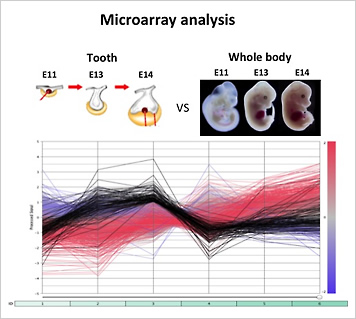
MicroRNA (miRNA) is a small noncoding RNA that binds to the messenger RNA (mRNA) target to repress its translation and plays an important role in cell differentiation, proliferation, and death. Exhaustive analysis of miRNA in craniofacial development during embryonic stage demonstrated that miRNA-200a contributed to chondrogenesis in developing mandibular condylar cartilage by controlling proliferation and differentiation in mandibular condylar cartilage cells.
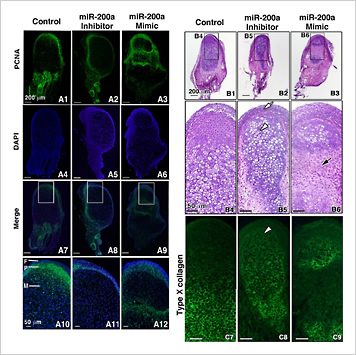
The development of the face is temporally and spatially controlled by various cytokines, growth factors and transcription factors during the embryonic stage. We are interested in the function of fibroblast growth factors (FGFs) and their receptors, and of microRNAs, during the formation of the lower jaw and temporomandibular joint. We are also trying to understand the mechanisms of tooth formation and organization, because the tooth morphogenesis and agenesis impact on malocclusion. Our specific interests are the role of matrix proteins, secreted from ameloblasts and odontoblasts, and of transcription factors involved in tooth number, morphogenesis, and mineralization.
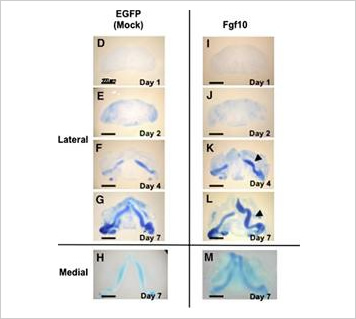
Mesenchymal cell differentiation can be controlled by a variety of growth factors and cytokines. “Mechanical stress” is another factor that controls the differentiation. We are focusing on chondrocytes and osteocytes as basic elements that make up the skeletal system, and aim to elucidate the mechanism(s) underlying the chondrogenic differentiation of mesenchymal cells under mechanical stretching.
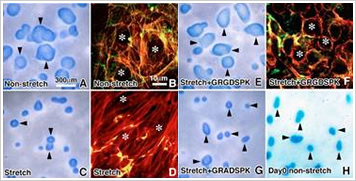
Finite element analysis is a computational technique that has proven beneficial in many topics of biomechanical research. We are employing this technique in the different basic, translational and clinical researches running in our department. Most recently, using this technique we were able to identify the factors that play role in the failure of orthodontic anchorage screws.
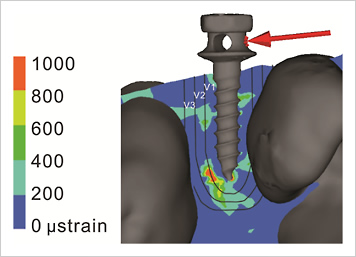
Fatigue and pain in masticatory muscles are considered to be the causes of lockjaw and masticatory disorders. These have a significant involvement in the improvement of quality of life, which is the endpoint of medical care. We have focused on molecular imaging as an objective bioinstrumentation method that is able to evaluate the metabolism of skeletal muscles noninvasively, and have investigated its validity.
Our goal is to determine the mechanism involved in the pathogenesis and establish effective diagnostic methods to identify fatigue and pain in masticatory muscles.
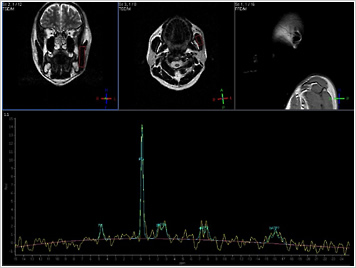
In 1970, the Department of Orthodontics, School of Dentistry, KU was established as the leading department of orthodontics in the Kyushu area. The first generation of researchers, Prof. Takahama and his colleagues, has comprehensively approached anthropological issues associated with the growth and development of the human face in relation to malocclusion. They have extensively worked on the comparative anatomy of the face in various areas in south-east Asia and in the Kyushu area. They also focused on the development of a treatment modality for cleft lip and/or palate (CLP) patients. Prof. Fujino in the Department of Oral Surgery has established the first CLP team in Japan at Kyushu University Hospital (KUH), which is supported by Prof. Takahama and his colleagues as orthodontists. The basis of the morphological and functional analysis of the dentomaxillofacial complex in the growing patients was established by this first generation of researchers.
As part of the second generation, Prof. Nakashima contributed to the three-dimensional (3D) analysis of facial and oral functions. Speech, smile, breathing and mastication are the most important functions of the human face, in addition to hearing, smelling and social interactions. To explore the physiological importance of the maxillofacial complex, 2D and 3D static and dynamic analyses: i.e. motion capture analysis of the facial expressions, was a major focus from the early 1990s until the late 2000s.
Now, in the early 2010s, we are renovating the department as the SODO. We are establishing an outcome-based postgraduate orthodontic specialty education program to cultivate orthodontic specialists. We are also building the craniofacial molecular developmental biology laboratory to comprehensively develop regenerative medicine as a therapeutic modality for orthopedic treatment, and to facilitate progress in the basic research regarding craniofacial growth and development. The molecular basis of the maxillofacial, temporomandibular joint and tooth development are being analyzed by research specialists by means of protein production, localization and function and gene expression, to better understand their regulation and functions. On the other hand, in our orthodontic clinics, we have started to establish an outcome-based evaluation system for our clinical outcomes to ensure that the highest level of care is provided to patients.